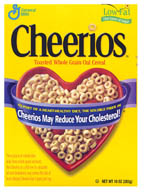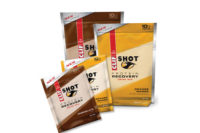The Road to Health

Those statistics, while alarming in and of themselves, do not address a driving concern—the future impact of healthcare costs to combat obesity-related diseases, i.e., diabetes, high blood pressure, heart disease, etc.
Battling obesity and its related risks will require marketing with healthful ideals. In fact, unlike the typical awareness-driven efforts of the past, marketing for health will demand mastery of a new discipline—subtlety. Linda Gilbert, president of HealthFocus International, Atlanta, puts it best: “Consumers want to know companies have done their homework. They don't want to read that homework.”
Studying Up
This is not to devalue studies evaluating the healthfulness (or lack thereof) of foods, but it's important to remember that consumers have been inundated with results touting the benefits of everything from honey and nuts to chocolate and caffeine. For the public, as a whole, some of these results counter traditional thinking, and what is more, studies that contradict each other (or conventional wisdom) only provide the consumer a justification to continue his eating patterns.One such recent study completely contradicted a principle entrenched in consumers' minds, that fruits and vegetables in their natural state are best. According to scientists from Cornell University, Ithaca, N.Y., heat processing sweet corn can significantly increase the level of naturally occurring compounds that help fight disease. Furthermore, the same researchers discovered that cooking tomatoes triggers a rise in total antioxidant activity, primarily due to an increase in lycopene.
To be convinced of new health information, consumers need hard scientific evidence. Marketing a food utilizing the results of any one study will meet limited success at best. Companies must then convert those results into lasting, memorable and, most importantly, tasty eating suggestions. Take, for instance, a pair of cookbooks from the American Heart Association (AHA), Dallas. In partnership with the AHA to help consumers improve their diets, Foster Farms is offering a free cookbook filled with heart-healthy recipes and guidelines.
The AHA published the Around the World Cookbook on its own. Realizing that certain ethnic foods may conflict with a healthy diet, this guide offers tips to make foreign fare healthier. For example, when choosing a Chinese entrée, opt for the dish loaded with vegetables. When eating Mexican foods, the AHA recommends ditching the fried tortilla chips in favor of soft corn tortillas to dip in salsa, omitting sour cream and guacamole, and using salsa to flavor foods.
Elimination Frustration
Until recently, healthy food options meant eliminating a key ingredient and, typically, sacrificing taste. For example, the low-fat/fat-free craze led to hundreds of new products, and many met with at least limited success. However, consumers soon realized that eliminating the fat impacted the taste of the product, and returned to the original, less-than-healthful varieties. Today, the realization has set in that fat serves a purpose, is a major source of energy, aids in absorption of essential vitamins and is needed for flavor. Consumers are more knowledgeable and, by and large, are educated about the differences and requirements of saturated, unsaturated and polyunsaturated fats.
Recent retail introductions have shown a shift away from fat content concerns, as many companies have turned their elimination efforts to sugars and carbohydrates. Currently, the nation's diabetic population stands at about 17 million, a number that is growing rapidly. With that size of a consumer base, it is not surprising to see a number of manufacturers, including candy makers, adding sugar-free options to their lineups. One such product is from D-Liteful Bakery, Miami, whose Splenda Heavenly Desserts Sugar Free Meringue comes in raspberry and chocolate flavors. Velvet Ice Cream, Utica, Ohio, has added a line with a similar focus.
Manufacturers also have sought the sugar-fighter's dollar by debuting no-sugar-added items. Among the most recent are North Star Health Wise Vanilla Ice Cream with a fudge shell from Ice Cream Specialties, St. Louis, and Blue Bunny Banana Split Ice Cream from Wells Dairy, Le Mars, Iowa. While no sugar has been added, the North Star item still boasts 4g of sugar.
In perhaps the most-curious move, Anheuser-Busch, St. Louis, has taken Michelob into the low-carbohydrate arena. Michelob Ultra promises 95 calories and 2.6g of carbohydrates, as compared with 150 calories and 5g of carbs in regular 12-oz. bottles of beer.
Addition Perdition
Consumers may be unwilling to forego their favored tastes in favor of more healthy products. Gilbert has found that, in making their diets more healthful, consumers have shifted from avoidance to inclusion—i.e., not avoiding fat, but focusing instead on including nutritionally desirable foods and nutrients. “Shoppers concerned with avoiding dietary negatives have already made the changes they are going to make.” Their focus will now be on positive nutrition with little or no downside.
Soy protein has found its way into a number of products beyond the cereal aisle. Galaxy Nutritional Foods, Orlando, for instance, recently debuted its ready-to-serve Ultra Smoothie single-serve product. This combination of Tropicana fruit juices and Galaxy's Veggie Milk features a complete serving of soy protein in each 8-oz. cup, which also is touted as a good source of nine vitamins and minerals.
Fortification has even made its way into infant formulas. Mead Johnson Nutritional's, Evansville, Ind., Premature Lipil and EnfaCare Lipil are designed especially for premature and low birth weight babies, adding a blend of DHA and ARA. These two nutrients are “the building blocks of a baby's brain and eyes,” according to the company.
Indeed, the notion of food that prevents or treats a medical problem has boomed in popularity, as consumers become increasingly aware of the benefits and role that nutraceuticals play. With sales of $17.2 billion in 2001 (which is expected to climb to $22 billion by 2006), nutraceutical products are now in items once considered unhealthy, and expect more of this to continue, says a report from MarketResearch.com. “The U.S. Market for Nutraceutical Foods and Beverages” claims that “marketers have largely overcome the challenge of maintaining the flavor and taste of a food with nutraceutical elements by using new technologies and ingredient-implementing techniques.” The report predicts that stereotypically unhealthy products could see reformulation as a healthy nutraceutical.
Help Needed
Americans are aware that their dietary habits must change. The news hits them every day. In just one recent example, the Institute of Medicine, Washington, D.C., set minimum levels for dietary components, saying adults should consume 130g of carbohydrates and 25-38g of fiber daily. The carbs will not be a problem, as Americans have proven they are sweet on sweets, but the Institute has suggested that no more than 25% of total calories should come from added sugars. For fiber, men under the age of 50 need at least 38g, while women should consume at least 25g. The healthful message appears to be getting through. A survey by Cooking Light with Yankelovich Monitor found that 63% of respondents view finding healthful foods as their most-important consideration when choosing foods to eat. That number is significantly greater than the 42% for whom convenience was the most important factor.
In addition, long-term food consumption studies by the USDA have found that Americans buy 21% more fruits and vegetables and 102% more poultry than they did 30 years ago. Whereas total fat provided 40% of American diets in the late 1970s, it now provides only 33%.

Above all, taste continues to be a primary obstacle to healthy eating, and Gilbert has found that consumers are less willing than ever to compromise taste for health benefits. No matter how adept the marketers or how sound the principles applied, healthful foods will fail unless they deliver in the taste arena.
Links
Looking for a reprint of this article?
From high-res PDFs to custom plaques, order your copy today!




